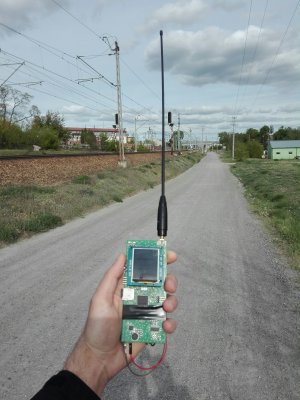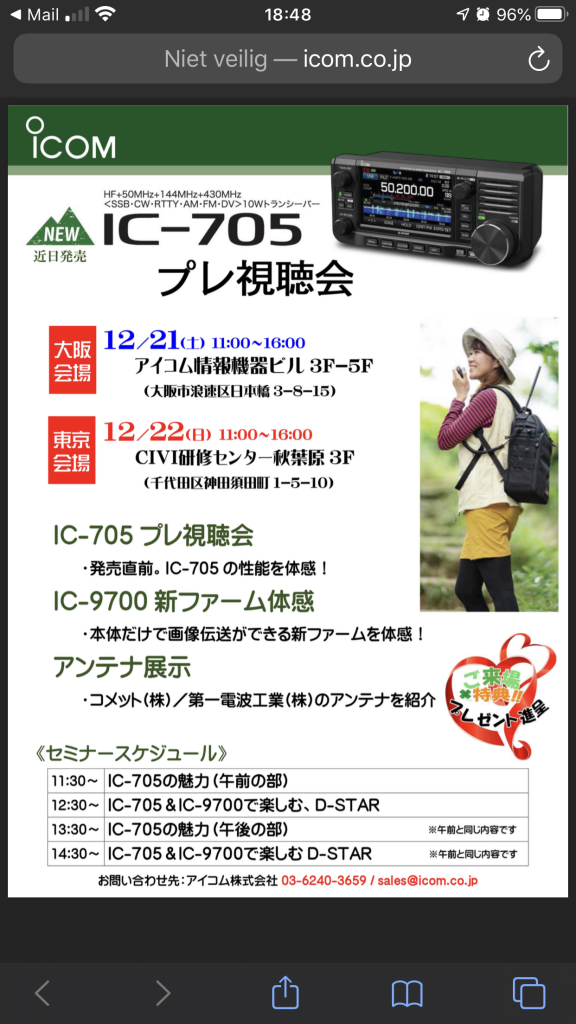Author Archives: Peter PA3PM
Dstar Repeater PI1AMS weer QRV
Al enige tijd stond de Dstar repeater PI1AMS op laag vermogen vanwege een technisch probleem. Op het TX board van de repeater waren een aantal printspoortjes verdwenen. De repeater is eerder door het leven gegaan als PI1RYS en al jaren in gebruik op verschillen locaties in Amsterdam. Ook is hij in de afgelopen jaren verschillende malen gerepareerd. Helaas is het niet meer gelukt de repeater op hoog vermogen te laten werken. Na een telefoontje met AMCOM, de officiële Icom distributeur voor de Benelux uit Nieuw-Vennep, bleek dat zij een ooit geretourneerde IP-RP4000V repeater hadden staan. Deze hangt nu werkend in het rack van PI1AMS in Amsterdam Nieuw West. Hopelijk blijft hij vele jaren zijn werk doen. Met dank aan Paul Steenweg van AMCOM B.V.

Van Ad Hoc naar Automated Data Collection in Linux
M17: een open-source, DMR-achtig systeem
Bron: KB6NU
An M17 radio prototype.
On reddit, Wojciech, SP5WWP, just posted an item about his latest project, and open-hardware and open-software, DMR-like system called M17. He says that his goal is “create a fully functional, truly open-source and open-hardware system for digital radio communication. Something like DMR, but with open hardware too.” I have cobbled together the following from the FAQ and and a post on his website.
M17 is a community-driven, truly open, free to use digital radio system. It’s a a DMR alternative, if you will. All schematics and source code is available for free on github.

Wojciech says that he’s developing M17 because there’s no open platform for developing digital radio and because DMR isn’t really amateur-friendly. You can’t really experiment with it. He says, “It’s no fun using something, that’s only available at commercial retail. Is that true ham spirit?” He goes on to say that M17 provides all that’s missing in DMR, and because it uses the Codec2 vocoder developed by David Rowe, the voice quality is better as well.
Internally, M17 radios use an STM32F7 family microcontroller along with a SiLabs Si4463 RF front-end chip. The microcontroller samples the voice signal from the microphone using an ADC, encodes it with Codec2, and sends the encoded voice as a data packet. In addition, the radio has an RF power amplifier, an accelerometer (ADXL345) and a place for a GNSS module.
The coded speech bitrate is 3200 bits per second, and it is possible to send data packets alone or as embedded data along with voice channel. M17 does not currently support encryption, but the developers are working on AES implementation.
Wojciech has been working on the project for about a year now, and while he has made substantial progress, is looking for some help. Specifically, he’s looking for people with the following skills:
- C programming (Raspberry Pi, STM32, PC)
- PCB routing (preferably KiCAD)
- Familiarity with 3D printing, CAD/CAM
- Soldering, prototyping
- Open mind – concept testing
If you have any interest in working with him on this project, you can contact him via email (w.kaczmarski@teletra.pl) or on LinkedIn. It all sounds pretty cool to me.
Zit de ICOM IC-705 er aan te komen?
Op 21-12 wordt er in Osaka en op 22-12 wordt er in Tokyo een pre-viewing party georganiseerd rondom de IC-705.
